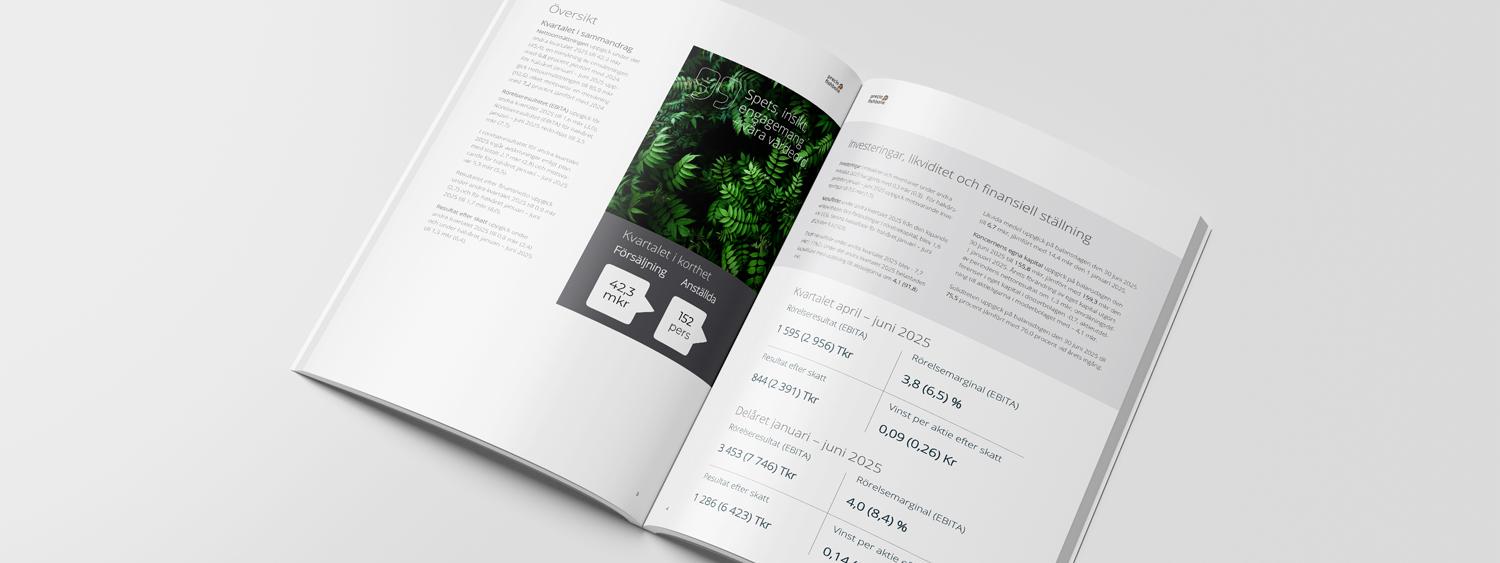
Precio Fishbone AB (publ) Interim Report January – June 2025
Demand during the quarter continues to be affected by the economic downturn, but sales and utilization have nevertheless shown a slight upward trend. During the quarter, we decided on and initiated several changes, including the winding down of parts of the business and new investments and expansions in other areas. We have incurred approximately SEK 1 million in costs related to these actions during the quarter, which has a short-term negative impact on profitability and margins. However, we view this as an investment and an important step in building a stronger Precio Fishbone.
- /
- Who We Are/
- Press/
- Precio Fishbone AB (publ) Interim Report January – June 2025
- Who We Are
- Press
- /Precio Fishbone AB (publ) Interim Report January – June 2025

Financial Performance
The EBITA margin for the quarter was 3.8 percent, which is well below our targets. Even when adjusting for non-recurring costs related to winding down parts of the business and expanding others, we do not reach last year’s EBITA margin of 6.5 percent. We are not satisfied with this outcome; our goal and ambition are to achieve growth and return to an EBITA margin of 10 percent through the measures and initiatives we have begun implementing.
Digital Journey
During the quarter, we initiated a transformation process within what we refer to as Digital Journey. Part of this change involves our geographical footprint. We have chosen to close the offices in Västerås and Borlänge in order to focus on Umeå and Gävle. Our offices in Örebro and Eskilstuna also cover the market in Västmanland. In Borlänge, we have for some time seen declining local demand, with major buyers of consulting services reducing their procurement. We have now chosen to move the remaining operations to Gävle and integrate them organisationally with the Stockholm office.
Another change is the expansion of our web development offering. For many years, we have been specialists in technically complex websites and have, among other things, developed trafiken.nu and spelpaus.se. However, we have not had a delivery capability in this area from our Stockholm office. We have decided to make a strategic investment here and are already on track to hire around ten new consultants during Q3.
Through a partnership agreement with Multisoft, we have also created a platform for a strong system development offering based on their Microsoft-based low-code platform, Softadmin. Thanks to the establishment in Umeå and the high level of expertise in this platform among the consultants we have successfully recruited, we have had a flying start in Q3.
SaaS Services
For the election administration service Kaskelot, we have invested in further development ahead of next year’s election. Some additional development work remains, but it will be completed well in advance of the election. Several new municipalities have joined during the quarter, and we expect to exceed 70 municipalities by year-end.
In Denmark, municipal elections will take place in November, leading to an influx of new municipalities seeking a user-friendly service that meets the very high security requirements for managing the election process. There are now 30 Danish municipalities using Valghalla.
The major funding cuts by USAID earlier this year sent shockwaves through the entire international aid sector. Many customers using our SaaS solution, NGO Online, were severely affected. Some have even been forced to cease operations almost entirely. The funding challenges have had a significant impact on demand from existing customers and on opportunities for new sales. We have offered alternative payment models to support customers, and although this has a short-term negative effect on our cash flow, it is beneficial in the long term.
During the quarter, we signed an agreement with Caritas Austria, and we expect at least one more new customer this year. While this is clearly too low a growth rate in the long term, we believe that development will accelerate again in the coming years. The need for aid remains, and the funding gap created by USAID’s withdrawal will, over time, be filled by other sources.
